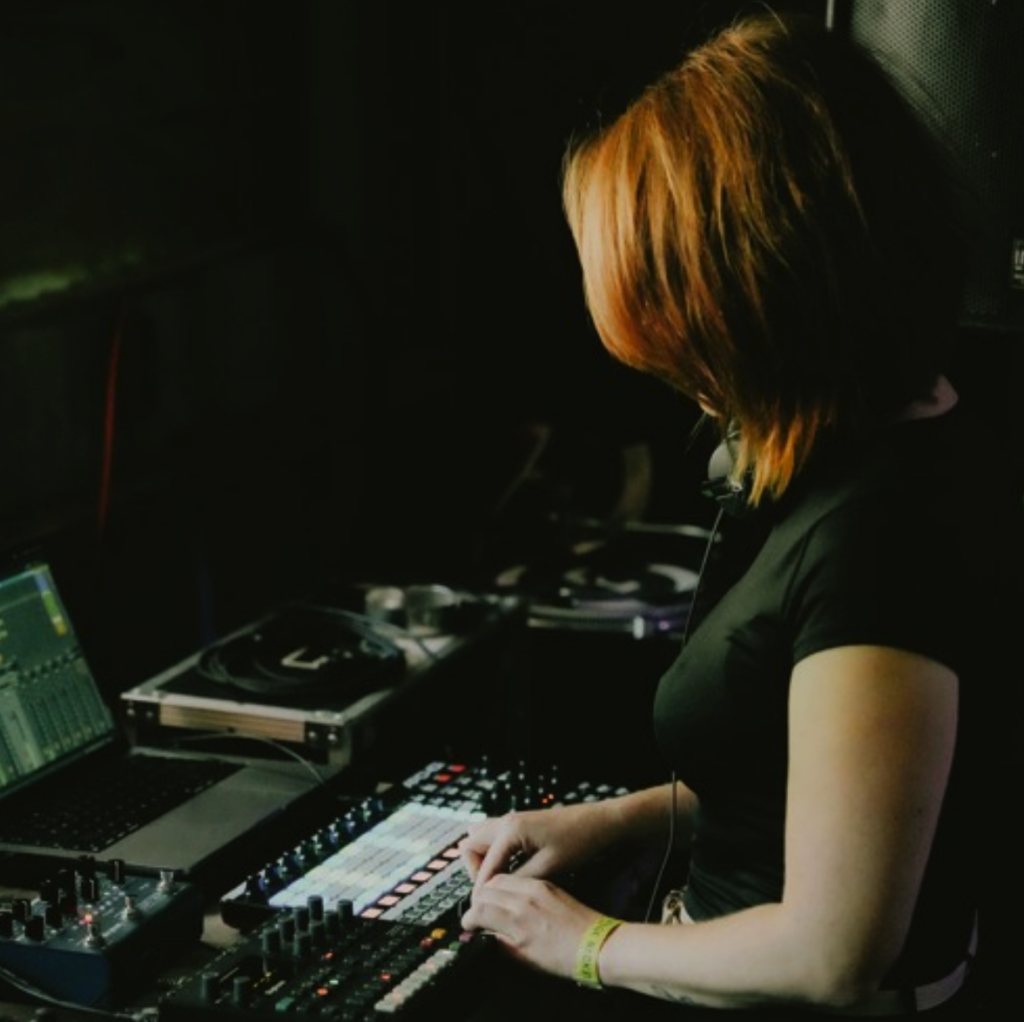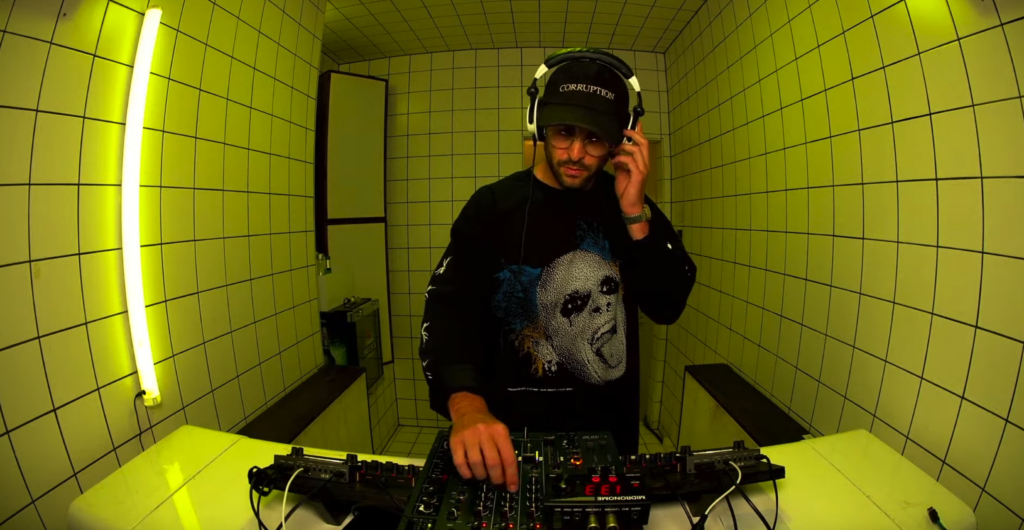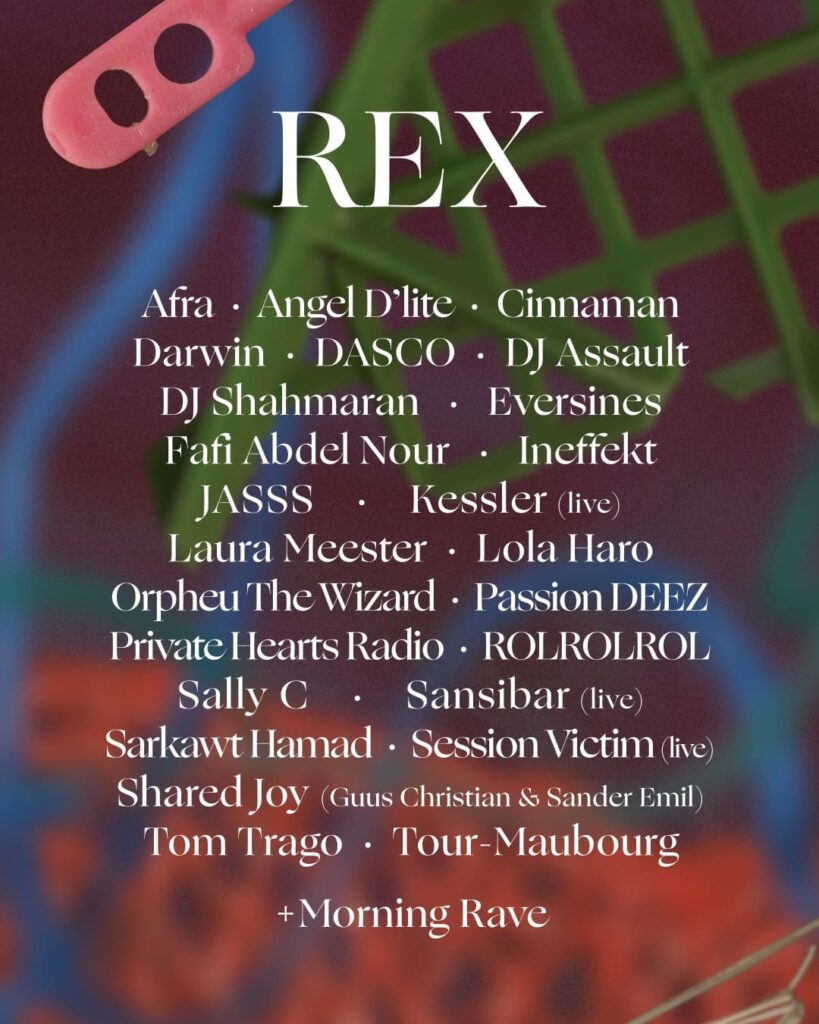That state of trance which we are seeking after so much.
—
“Quadraphonic Surround“
The concept is to bring surround into our beloved dance music, not an experimental concert type of event, but actual “club music” in surround, executed in real time on analog drum machines, modular synthesizers, a quadraphonic analog “Studer” console from the 60’s and multichannel digital multi-effects, fully using all the possibilities offered by a quadraphonic set up, such as 3 dimensional immersive impression, where the dancer feels like he stands inside the artificial “space” created thanks to surround possibilities such as surround reverbs and other effects, and the use of analog spatializers creating the feeling of “distance”.
On top of placing each sound in a 3 dimension space thanks to the quadraphonic console, the use of eurorack modules such as joysticks (yes like in the 80’ies video games) and “quad spatializers”, any sound of the mix, can at any time be sent in motion around the dancers. Synthesizers and percussions are literally turning around the crowd each in an independent way regarding their direction, speed and distance from center.
The artist is in control of each sound motion, allowing him to create unprecedented “psychedelic environments” where the dancer can loose himself in the middle of synth sequences and percussions that are literally “dancing around him”, so he can enter much easier in that state of trance which we are seeking after so much.
A very simple upgrade on one of the dance floors of a festival or a club can allow an outstanding new way to experiment electronic dance music via quadraphony. Instead of 2 channels (= stereo), the quadraphony uses 4 channels, which are placed on each of the 4 corners of the dance floor, allowing to create immersive audio, also called surround.









